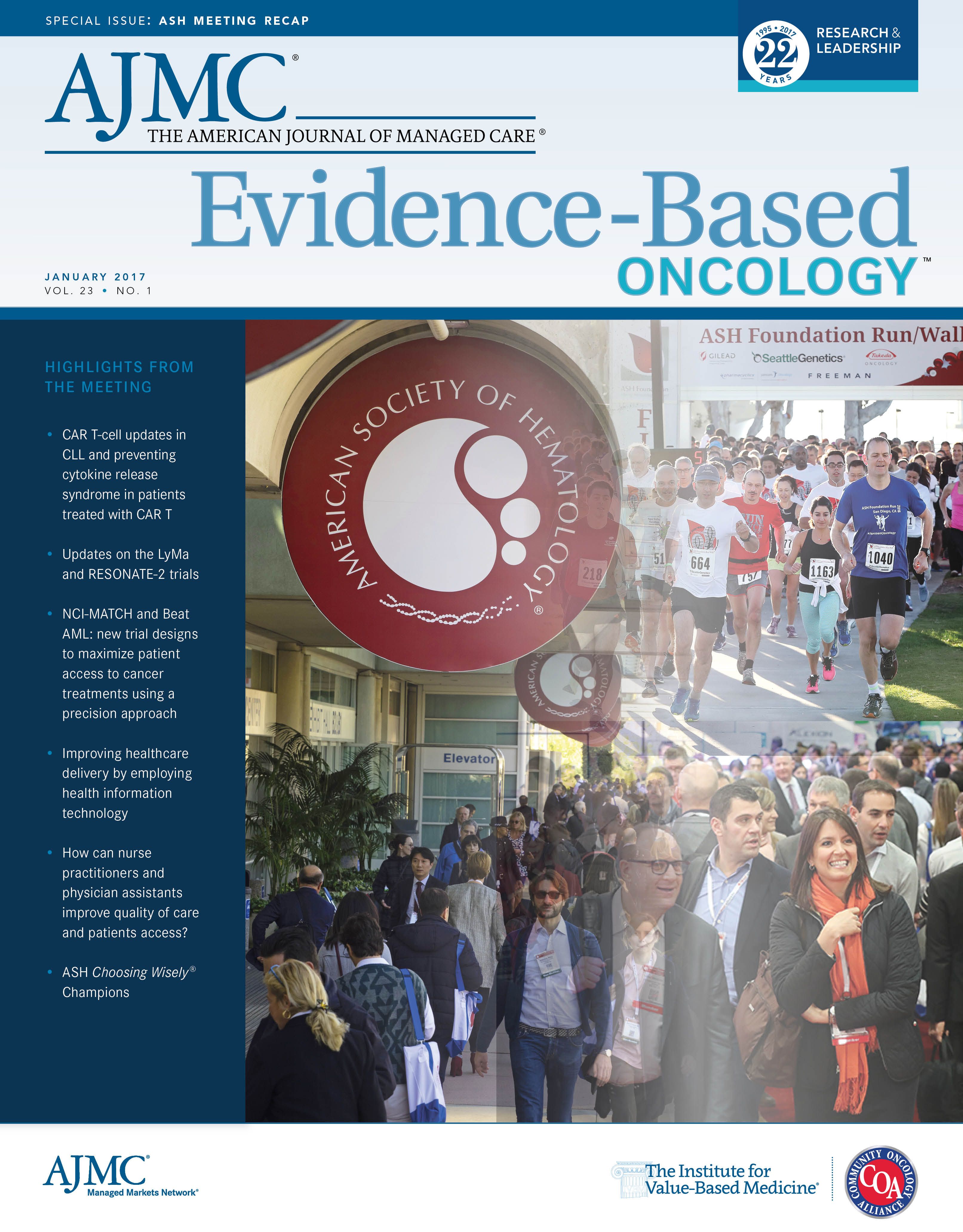Publication
Article
Evidence-Based Oncology
How Soon Will Pluripotent Stem Cells Find Clinical Utility?
Author(s):
A joint session hosted by the American Society of Hematology and the European Hematology Association provided an update on the clinical progress with pluripotent stem cells.
AN AFTERNOON SESSION
, hosted jointly by the American Society of Hematology (ASH) and the European Hematology Association (EHA) at the 58th Annual Meeting & Exposition of ASH, provided an update on a treatment that has been hailed as being promising for the medical field overall, not just oncology: pluripotent stem cells (PSCs).
The session was co-chaired by Charles S. Abrams, MD, president of ASH, professor of pathology and laboratory medicine, University of Pennsylvania Perelman School of Medicine, and Anthony R. Green, PhD, president of EHA, professor, Department of Hematology, Cambridge Institute for Medical Research, Wellcome Trust Medical Research Council Cambridge Stem Cell Institute.
PSCs, which are derived from the patient’s own cells, are genetically matched with the recipient, which reduces the risk of treatment rejection. However, the process of generating these cells carries the risk of introducing new mutations and causing cancer. Will they ever be therapeutically viable? According to George Q. Daley, MD, director of the Stem Cell Transplantation Program, Boston Children’s Hospital and Dana-Farber Cancer Institute, Boston, the answer is a resounding “Yes!” A senior investigator who has been in the field of stem cell research for a very long time, Daley provided a background on stem cells. “PSCs are special because they can be maintained forever in culture, but can differentiate into any tissue in the human body,” he said. First established in culture in 1998 by James Thompson, PhD, PSCs have already reached the clinic and a number of patients have been treated for diseases such as macular degeneration, while several clinical trials are evaluating this treatment for neurodegenerative diseases.
“In 2007, we perfected the process of reprogramming human stem cells. For any patient carrying a genetic disease, we can establish patient-derived PSCs. They can be manipulated in the laboratory using techniques such as CRISPR-Cas9 that can help gene repair of these PSCs,” Daley said. He added that several blood-based diseases, including sickle cell disease, thalassemia, and Fanconi anemia can all be treated genetically.
“We have embarked on using hematopoietic stem cells to replace defective platelets, red blood cells, and T cells, Daley added. “Disease models have already been developed for these.” A long-term ambition of the field, he said, is to use PSCs to transfuse or engraft blood products, which will allow a predictable and pathogen-free resource of cells.
A major challenge, however, is deriving the cell function, plus the costs associated with production and clinical work-up. These challenges evolve from the complex nature of mammalian blood lineage.
Daley then provided an update on how researchers are working to overcome these challenges, including the use of engineered T cells. Work by Themeli et al a few years back showed that tumor-targeted T cells, derived from induced PSCs (iPSCs), can be used in cancer treatment. The researchers combined iPSC and chimeric antigen receptor technology to generate human T cells targeted to CD19, an antigen expressed by malignant B cells, in tissue culture. These iPSC-derived T cells were able to inhibit tumor growth in a mouse model.1
Daley ended his talk by emphasizing his belief in the clinical utility of iPSCs.
The second speaker at the session was Oliver Brüstle, MD, from the Institute of Reconstructive Neurobiology, University of Bonn, Bonn, Germany. Brüstle, a neuropathologist, is well renowned for his stem cell work in the field of neurobiology.
“With the nervous system, a major challenge is the lack of accessible donor tissue,” Brüstle told the audience. The situation is further complicated by the fact that there is a “demographic tsunami,” meaning neurodegenerative diseases are more common in older individuals, he said.
Brüstle provided the audience a flavor for the various potential applications of embryonic stem cells and iPSCs:
- Cell replacement in diseases, primarily affecting 1 neuronal subtype (eg, Parkinson’s disease and Huntington’s disease) and in disease affecting glial cells (eg, Pelizaeus-Merzbacher disease)
- Supportive/trophic effects
- Cell-mediated gene transfer
- Modifying tissue function such as in epilepsy
“With an increased knowledge on in vitro differentiation, PSC-based therapies for replacing distinct cell types has become palpable,” Brüstle said. “The clinical impact of PSCs extends beyond stem-cell therapy and can influence cell-based drug discovery as well,” he added. REFERENCE
Themeli M, Kloss CC, Ciriello G, et al. Generation of tumor-targeted human T lymphocytes from induced pluripotent stem cells for cancer therapy. Nat Biotechnol. 2013;31(10):928-933. doi: 10.1038/nbt.2678.





